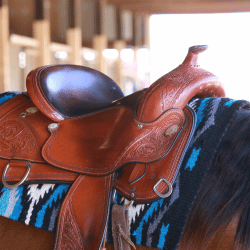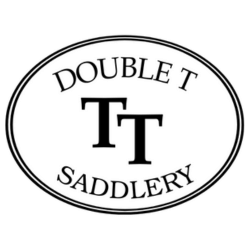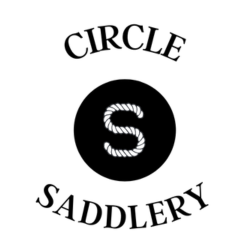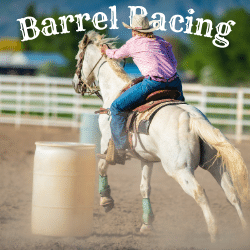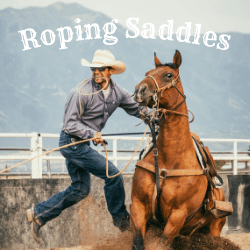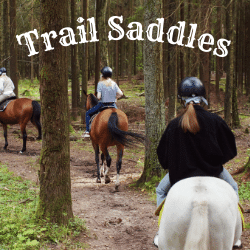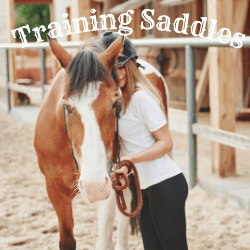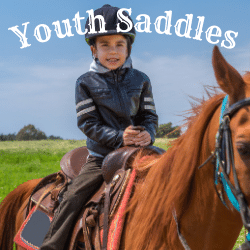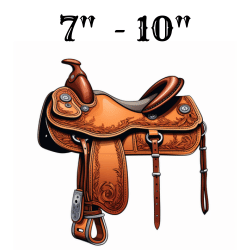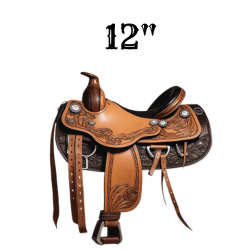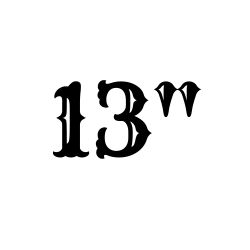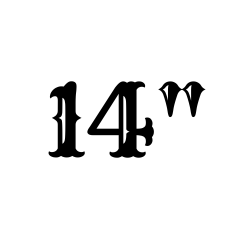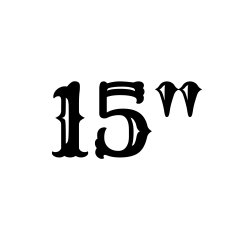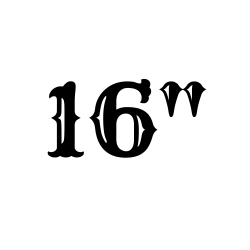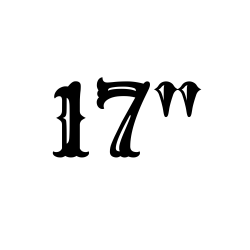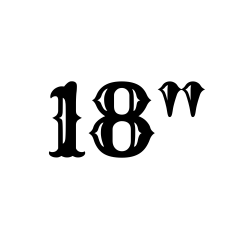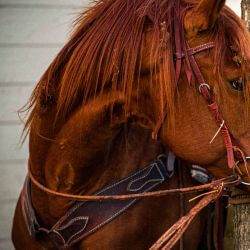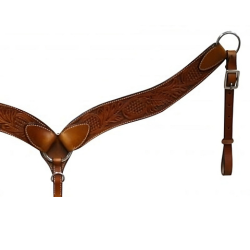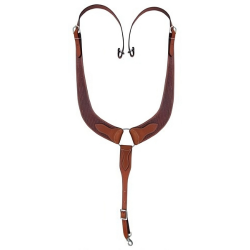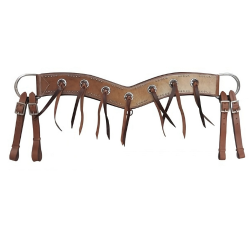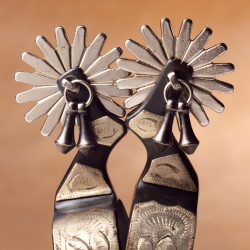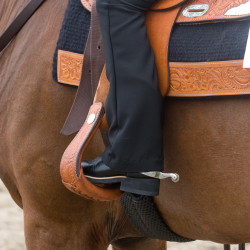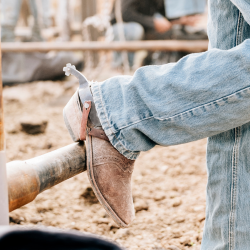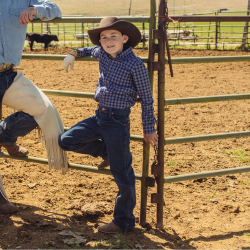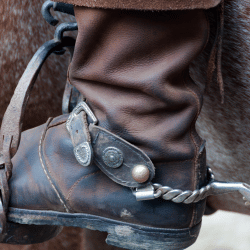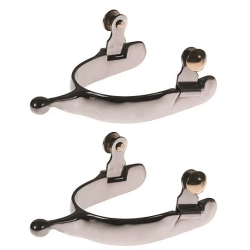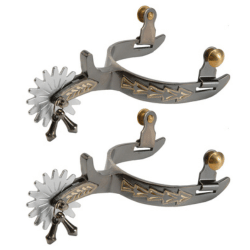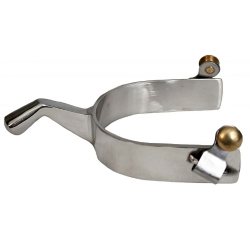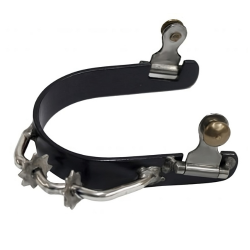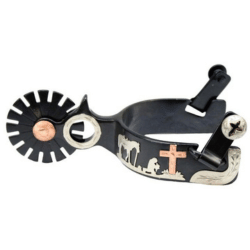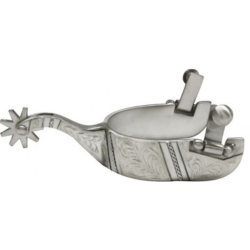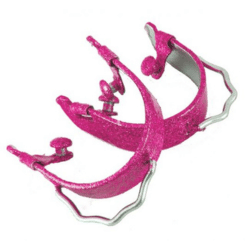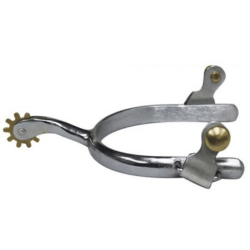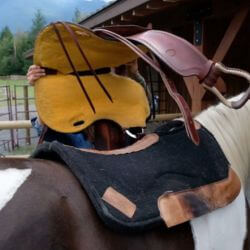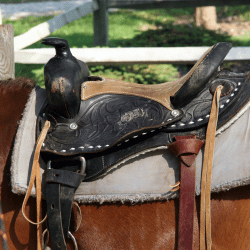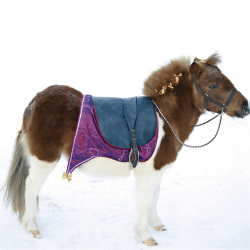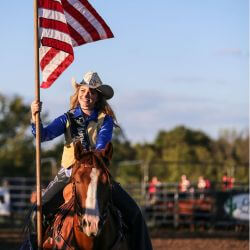If you're an equestrian enthusiast or a horse owner, you understand the importance of having reliable and durable horse reins. Traditional leather reins are a popular choice, but have you ever considered making your own paracord horse reins? Paracord, also known as parachute cord, is a versatile and strong material that can be used in various craft projects, including horse reins.
In this blog post, we will guide you through the process of making your own paracord horse reins. Not only will you have the satisfaction of creating something with your own hands, but you'll also have reins that are not only functional but also stylish. We'll cover everything from choosing the right paracord to attaching the reins to the bridle. So, let's dive into the world of paracord horse reins and discover how you can create your own.
First, we'll discuss the materials needed for this project, including the different types of paracord you can use and the other necessary supplies. We'll provide tips on choosing the right paracord and where you can purchase the materials. Once you have all your supplies ready, we'll move on to the step-by-step process of creating your paracord horse reins.
We'll guide you through measuring your horse for the right length of reins and deciding on a weave pattern that suits your preference. Then, we'll show you how to start and finish your paracord braid, ensuring a secure and sturdy grip. Finally, we'll teach you how to attach the reins to the bridle, completing your handmade paracord horse reins.
But it doesn't end there. We'll also provide tips on maintaining your paracord horse reins, including how to clean them and inspect them for wear and tear. Additionally, we'll discuss when it's time to replace your paracord reins to ensure the safety of both you and your horse.
Speaking of safety, we'll also cover some important safety tips when using paracord horse reins. We'll emphasize the correct way to use reins, common mistakes to avoid, and safety precautions for your horse.
By the end of this blog post, you'll not only have a new set of paracord horse reins but also the knowledge and skills to create more if needed. So, let's get started on this exciting journey of making your very own paracord horse reins!
Introduction: Understanding the Importance of Paracord Horse Reins
Paracord horse reins have gained popularity among equestrians for several reasons. Understanding the importance of using paracord horse reins will help you appreciate the value they bring to your riding experience. In this section, we will delve into the reasons why paracord horse reins are a great choice for horse owners.
1. Strength and Durability
One of the primary advantages of using paracord for horse reins is its exceptional strength and durability. Paracord is made from nylon and was initially designed for use in parachutes, where it needed to withstand immense pressure and weight. This same strength translates well to horse reins, as they need to withstand the force exerted by a horse during riding or training.
Paracord is built to be highly resistant to stretching, fraying, and breaking. It can withstand harsh weather conditions, repetitive use, and general wear and tear. This durability ensures that your paracord horse reins will last longer than traditional reins, providing you with a reliable and long-lasting tool for communication and control with your horse.
2. Lightweight and Comfortable
Another advantage of paracord horse reins is their lightweight nature. Compared to traditional leather reins, paracord reins are significantly lighter, reducing the overall weight on your horse's head and neck. This can contribute to the horse's comfort and ease of movement, particularly during longer rides or training sessions.
The lightweight nature of paracord reins also benefits the rider. Holding and maneuvering lighter reins can reduce fatigue in your hands and arms, allowing for better control and communication with your horse. Additionally, the flexibility of paracord allows for easier handling and manipulation, enhancing your overall riding experience.
3. Customization and Style
Paracord horse reins offer a wide range of customization options, allowing you to create a unique and personalized look. With various colors and patterns available, you can match your reins to your horse's tack or showcase your personal style. Customization not only adds a touch of individuality but also makes it easier to identify your reins in a busy equestrian setting.
Furthermore, paracord horse reins can be braided in different styles and thicknesses, allowing you to choose the grip and feel that best suits your preferences. Whether you prefer a thicker grip for added stability or a thinner grip for more finesse, paracord reins can be tailored to your specific needs.
4. Versatility and Multi-Purpose Use
Paracord itself is known for its versatility, and this extends to paracord horse reins as well. In addition to their primary function, paracord horse reins can serve secondary purposes in emergencies or unexpected situations. The strong and durable nature of paracord makes it useful for creating makeshift leads, halters, or even emergency repair materials in case of equipment failure during a ride.
This versatility adds an extra layer of preparedness and convenience to your equestrian activities. Knowing that your paracord horse reins can serve multiple purposes can provide peace of mind and ensure that you are always well-equipped for unexpected situations.
Understanding the importance of paracord horse reins allows you to make an informed decision when it comes to choosing the right reins for you and your horse. The strength, durability, lightweight nature, customization options, and versatility make paracord horse reins a valuable addition to your equestrian gear. In the following sections, we will explore the materials needed and the step-by-step process of creating your own paracord horse reins.
Materials Needed for Making Paracord Horse Reins
Before diving into the process of making paracord horse reins, it's essential to gather all the necessary materials. In this section, we will discuss the materials needed for this project, including the type of paracord to choose and other supplies required to create your paracord horse reins.
1. Choosing the Right Paracord
When selecting paracord for your horse reins, it's crucial to choose a high-quality and durable cord that will withstand the rigors of horse riding. Here are a few factors to consider when choosing the right paracord:
-
Type of Paracord: There are various types of paracord available, including Type I, Type II, Type III, and Type IV. Type III paracord, also known as 550 cord, is the most commonly used for horse reins due to its strength and versatility. It has a minimum breaking strength of 550 pounds and typically consists of a woven outer sheath and multiple inner strands.
-
Material: Paracord is typically made from nylon, which offers excellent strength and durability. However, some paracord may also incorporate polyester or other materials. Ensure that the paracord you choose is made from high-quality nylon for optimal performance.
-
Thickness: Paracord comes in various thicknesses, usually measured by the number of inner strands it contains. Thicker paracord provides a more substantial grip, while thinner paracord offers more flexibility and finesse. Consider your personal preference and the size of your hands when selecting the thickness of your paracord reins.
-
Color and Pattern: Paracord is available in a wide range of colors and patterns, allowing you to customize the look of your horse reins. Choose a color that complements your horse's tack or reflects your personal style. Keep in mind that darker colors may show less dirt and wear over time.
2. Other Necessary Supplies
In addition to paracord, you'll need a few other supplies to complete your paracord horse reins. These include:
- Scissors: Sharp scissors will be necessary for cutting and trimming the paracord during the braiding process.
- Lighter or Heat Source: A lighter or heat source is essential for melting the ends of the paracord to prevent fraying and secure the braid.
- Tape Measure: A tape measure will help you accurately measure the desired length of your horse reins.
- Optional Accessories: Depending on your preferences, you may also consider adding accessories such as leather connectors, buckles, or clips to attach the reins to the bridle.
3. Where to Buy Your Materials
Now that you know what materials you need, it's time to acquire them. Here are a few places where you can purchase the required materials for making paracord horse reins:
- Local Tack Stores: Check with your local equestrian supply stores or tack shops. They often carry paracord and other necessary supplies for horse-related projects.
- Online Retailers: Numerous online retailers specialize in paracord and equestrian supplies. Websites such as Amazon, eBay, and specialized equestrian stores offer a wide selection of paracord in different colors and thicknesses.
- Craft Stores: Some craft stores may carry paracord in their rope or cordage sections. While the selection may be limited, it's worth checking if there's a store near you.
By gathering the right materials, including the appropriate type of paracord and other necessary supplies, you'll be well-prepared to embark on the journey of creating your own paracord horse reins. In the next section, we will guide you through the step-by-step process of measuring your horse and deciding on the length of your reins.
Steps to Create Your Paracord Horse Reins
Now that you have gathered all the necessary materials, it's time to dive into the step-by-step process of creating your paracord horse reins. In this section, we will guide you through each stage, from measuring your horse for the right length of reins to attaching them to the bridle. Let's get started!
1. Measuring Your Horse for the Right Length
The first step in creating your paracord horse reins is to measure your horse for the appropriate length. Follow these steps:
- Step 1: Put a bridle on your horse, ensuring that it fits properly.
- Step 2: Attach a lead rope or a temporary set of reins to the bridle.
- Step 3: Stand beside your horse's shoulder and hold the lead rope or reins as if you were riding.
- Step 4: Extend your arm forward and measure the distance from your hand to the bit rings or the desired placement on the bit.
- Step 5: Add a few inches to accommodate for the braid and adjustment.
This measurement will give you an approximate length for your paracord horse reins. It's important to note that the length can vary depending on your riding style and personal preference. Adjustments can be made later during the braiding process.
2. Deciding on a Weave Pattern
Before you begin braiding your paracord horse reins, it's essential to decide on a weave pattern. There are various braiding techniques you can choose from, including the diamond braid, round braid, or square braid. Each pattern offers a unique look and grip. Consider your preference and the level of difficulty for each pattern.
3. Starting Your Paracord Braid
Now that you have measured your horse and selected a weave pattern, it's time to start braiding your paracord horse reins. Follow these steps:
- Step 1: Cut six equal-length strands of paracord, ensuring they are longer than your measured length to allow for adjustments.
- Step 2: Tie all six strands together at one end, leaving a small loop for attachment later.
- Step 3: Secure the loop to a stationary object, such as a hook or a doorknob, to keep the reins steady during the braiding process.
- Step 4: Divide the six strands into three pairs, ensuring they are evenly distributed.
- Step 5: Start braiding by crossing the right pair over the center pair, then the left pair over the new center pair.
- Step 6: Repeat this process, crossing the right pair over the center and then the left pair over the new center.
- Step 7: Continue braiding until you reach the desired length, periodically adjusting the braid's tightness to ensure consistency.
4. Finishing Your Paracord Braid
Once you have braided the paracord to the desired length, it's time to finish off the reins. Follow these steps:
- Step 1: Trim the excess paracord, leaving approximately 2-3 inches of length.
- Step 2: Melt the cut ends of the paracord using a lighter or heat source to prevent fraying. Be careful not to burn the cord.
- Step 3: Press the melted ends against a non-flammable surface to flatten and secure them.
- Step 4: Repeat this process for all cut ends of the paracord.
5. Attaching the Reins to the Bridle
The final step is to attach your paracord horse reins to the bridle. Follow these steps:
- Step 1: Remove the temporary reins or lead rope from the bridle.
- Step 2: Thread the looped end of your paracord reins through the bit rings or the desired attachment point on the bit.
- Step 3: Pull the looped end through and pass the loose ends of the reins through the loop, creating a secure attachment.
- Step 4: Adjust the length of the reins as needed by sliding the looped end up or down.
Congratulations! You have successfully created your own paracord horse reins. Take a moment to admire your handiwork and ensure that the reins are securely attached to the bridle. In the next section, we will discuss how to maintain your paracord horse reins to ensure their longevity and performance.
Maintaining Your Paracord Horse Reins
Now that you have created your paracord horse reins, it's important to properly maintain them to ensure their longevity and performance. In this section, we will discuss the steps you can take to clean your paracord reins, inspect them for wear and tear, and know when it's time to replace them.
1. How to Clean Your Paracord Reins
Regular cleaning of your paracord horse reins is essential to keep them in good condition. Here's how you can clean your paracord reins:
- Step 1: Fill a bucket or basin with warm water and add a mild detergent.
- Step 2: Immerse the paracord reins in the soapy water and gently agitate them to loosen any dirt or debris.
- Step 3: Use a soft brush or cloth to scrub the reins, paying extra attention to any areas with stubborn stains.
- Step 4: Rinse the reins thoroughly with clean water to remove any soap residue.
- Step 5: Hang the reins to air dry in a well-ventilated area, away from direct sunlight or heat sources.
Avoid using harsh chemicals, bleach, or abrasive cleaning tools, as they can damage the paracord material. Regular cleaning will help maintain the appearance and cleanliness of your paracord horse reins.
2. Inspecting for Wear and Tear
Regularly inspecting your paracord horse reins will help identify any signs of wear and tear that may compromise their integrity. Here's what you should look out for during your inspections:
- Fraying or Loose Strands: Examine the paracord reins for any frayed or loose strands. If you notice significant fraying or unraveling, it may be an indication that the reins need to be replaced.
- Weak Points: Pay attention to areas where the reins experience the most tension, such as where they attach to the bit or where you hold them. Check for any signs of weakness, such as stretching or thinning of the paracord.
- Knots or Snags: Inspect the entire length of the reins for any knots or snags that may affect their smoothness or integrity. These can create discomfort or compromise the strength of the reins.
Address any issues promptly. Small repairs can be made by re-braiding or melting the paracord, but significant damage may require replacing the reins entirely.
3. When to Replace Your Paracord Reins
As with any piece of equestrian equipment, paracord horse reins have a limited lifespan. Knowing when to replace them is crucial for the safety and comfort of both you and your horse. Consider the following factors when determining if it's time to replace your paracord reins:
- Significant Wear and Tear: If your paracord reins show extensive fraying, unraveling, or weakness, it's time to replace them. Using compromised reins can pose a safety risk during riding or training.
- Loss of Functionality: If the paracord reins have become stiff, excessively stretched, or no longer provide a secure grip, it may be time for a replacement. Reins that don't function properly can affect communication and control with your horse.
- Age and Frequency of Use: Paracord reins, like any equipment, will naturally wear out over time, especially with frequent use. Consider the age of your reins and how often they are used when evaluating their condition.
Regular inspections and maintenance will help you identify when your paracord horse reins need to be replaced. Always prioritize safety and replace worn-out reins promptly to prevent accidents or discomfort.
By following these maintenance practices and knowing when to replace your paracord horse reins, you can ensure their durability, functionality, and longevity. In the next section, we will discuss some important safety tips to keep in mind when using paracord horse reins.
Safety Tips When Using Paracord Horse Reins
Using paracord horse reins safely is essential to protect both you and your horse during riding or training sessions. In this section, we will provide you with some important safety tips to keep in mind when using your paracord horse reins.
1. Using Reins Correctly
- Proper Grip: Ensure that you have a secure and comfortable grip on the reins. Hold them with a relaxed but firm hand, maintaining a consistent contact with your horse's mouth.
- Hand Position: Keep your hands at an appropriate height and width, allowing for clear communication with your horse. Avoid holding the reins too high or too low, as this can impact your control and balance.
- Even Contact: Aim for even contact on both reins to provide clear and consistent cues to your horse. Avoid applying excessive pressure or pulling on one rein more than the other, as it can cause confusion or discomfort for your horse.
2. Avoiding Common Mistakes
- Overuse of Rein Aids: Resist the temptation to rely solely on rein aids for control. Remember to use your seat and leg aids in conjunction with the reins to communicate effectively with your horse. Overusing the reins can lead to resistance or confusion.
- Excessive Tension: Avoid maintaining constant tension on the reins. Allow for moments of relaxation and give-and-take, providing opportunities for your horse to respond and find balance.
- Abrupt Rein Actions: Smooth and gradual rein actions are more effective and comfortable for your horse. Avoid sudden or jerky movements, as they can startle or confuse your horse.
3. Safety Precautions for Horses
- Proper Warm-up: Before engaging in any activities with your horse, ensure a proper warm-up routine to prepare their muscles and joints for work. This helps prevent injuries and improves overall performance.
- Regular Training: Consistent and regular training sessions can help your horse become more responsive to your cues and aids, promoting a safer riding experience.
- Proper Tack Fit: Ensure that your horse's tack, including the bridle and bit, fits correctly and does not cause discomfort or pain. Ill-fitting tack can lead to resistance or behavioral issues.
4. General Safety Considerations
- Riding Environment: Choose a safe and suitable riding environment, free from hazards such as slippery surfaces, low branches, or uneven terrain.
- Safety Equipment: Always wear appropriate safety gear, such as a helmet and riding boots, to protect yourself in case of falls or accidents.
- Riding with Others: If riding with others, communicate clearly and maintain a safe distance to avoid collisions or interference.
Remember, safety should always be a top priority when working with horses. By following these safety tips, you can help ensure a safer and more enjoyable experience when using your paracord horse reins.
As we reach the end of this comprehensive guide on making and using paracord horse reins, we hope you have gained valuable insights and knowledge. Enjoy your new paracord horse reins and happy riding!

